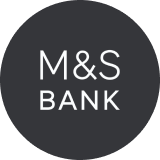Getting ahead of your loan eligibility requirements is key to understanding what type of loan you could qualify for, and how much you could borrow – without having to actually apply and get checks made against your credit score (which isn’t always the best thing).
Many people find the world of personal finance perplexing, and sometimes it is hard to get a clear understanding of your loan eligibility without actually making an application.
In this article, we demystify the process of applying for a loan and break down the factors lenders consider when deciding whether to offer you the cash you’re after.
Whether you’re a personal finance novice or somebody who’s felt reluctant to explore your options for borrowing due to your circumstances, our eligibility guide is here to help.
What is loan eligibility?
You may have seen the term ‘loan eligibility’ discussed by personal finance experts before. But what does it actually mean?
Loan eligibility encompasses all the criteria and requirements which lenders set out to help them figure out whether you qualify for any of their loans.
It tends to vary from loan to loan, and from lender to lender, but there are a few key factors to be aware of.
You need to assess your application against a few central factors:
• Your overall financial stability
• Your creditworthiness
• Details of your income
• Your employment history
• And finally, your debt-to-income ratio
These all play a part in helping your lender come to a final decision for most types of loans out there.
Lenders also use their eligibility criteria to determine the level of risk they’d be taking if they lent you money.
By assessing your eligibility using their metrics, they can get an idea of your ability to repay the loan on time and estimate the likelihood of you defaulting.
The more risk you are to a lender based on this criteria, the higher interest rate you’ll likely be offered.
In some ways, it can feel counter-intuitive or even unfair. But from a lender’s perspective, they need to offset greater risks by charging more interest.
For you as a borrower, understanding how loan eligibility is calculated gives you an idea of your chances of securing a loan before you hit send on your application.
And armed with this information, you can then prepare yourself for the process of applying for a loan by improving your general financial health if necessary, like making efforts to improve your credit score, for example.
And taking the time to understand eligibility criteria can also protect your credit score.
Any rejected loan applications against your name can negatively affect your credit score – so knowing in advance the likelihood of being accepted can be a good advantage.
It’s important to remember that your apparent eligibility for a loan isn’t a hard and fast guarantee that you’ll get that all-important approval from a lender.
Whilst meeting the eligibility criteria does increase your chances of eventually getting approved, other factors like your lender’s individual discretion also play a key role in their final verdict.
Loan eligibility criteria
As we mentioned, lenders consider a few different factors when assessing your eligibility to take out one of their loans.
While the criteria they use may differ depending on which lender you go for and the type of loan you’re looking to take out, there are some common factors which lenders typically rely on:
• Your credit history is arguably the most important factor which lenders consider before offering you a loan.
They spend time reviewing your credit score, which gives an overview of your past behaviour surrounding credit use.
Your score will be informed by things like your payment history, any outstanding debts against your file, and your credit utilisation overall.
A higher credit score will tell a lender that you are able to responsibly manage credit.
Generally, having a good score strengthens your chances of securing that vital stamp of lender approval.
You can check your credit score for free with Experian or ClearScore.
• Lenders will also assess details surrounding your income as part of their decision-making process.
This allows them to determine your capacity to make prompt repayments in line with a schedule.
They evaluate the stability of your employment which can be determined by considering the length of time you’ve had a job, and the consistency with which you get paid.
Showing a lender that you have a steady stream of income allows them to feel confident that you can meet your repayment obligations.
• Lenders will closely analyse your debt-to-income ratio before agreeing to lend you any cash.
This figure compares your monthly debt repayments to the sum of your monthly pay packet.
A ratio which is on the lower side indicates that you’re in a healthy financial position, and therefore possess better loan repayment capacity.
It’s important to keep your debt-to-income ratio within a manageable limit, as this improves your eligibility for a lot of loans on the market.
• The loan amount you request and your purpose for taking it out are likely to have an influence on your eligibility for credit.
Whilst some lenders are willing to let customers borrow money without knowing the reason for their application, others have certain restrictions on the sum of cash they can offer for different purposes.
This may mean that if the loan is required to pay for a non-essential expense like a holiday or a sportscar, your application may be looked on unfavourably, especially if you’re having trouble meeting your current financial obligations.
• In some instances, lenders require you to put up collateral to reduce the risk associated with giving out loans.
You could be asked to put up your home, car, or indeed any other valuable asset to secure the loan you’re applying for.
All in all, collateral affords lenders a straightforward way of recovering their funds if you default on a loan.
In many cases, you can also qualify for a higher loan amount if you’re willing to secure it with an asset.
• To evaluate your suitability as a borrower, lenders will assess any existing financial obligations you have to determine the likelihood of you paying your new loan back on time.
Things like other loan commitments, credit card debt, or any other regular expenses you need to cover are all taken into consideration.
Lenders look at these commitments closely to check you’ll be able to manage additional debt effectively.
• The loan term you’re after, as well as the interest rate, affect your overall loan eligibility too.
Longer loan terms might come with stricter eligibility criteria, as they expose lenders to the heightened level of risk associated with lengthy repayment periods.
After all, anything can happen in the world of personal finance, and the longer the loan term, the higher the chances are of you experiencing financial difficulty at some point during the repayment period.
Higher interest rates at the time of your loan application might also impact your perceived eligibility, as they increase the cost of your borrowing overall.
You can always take steps to strengthen your financial position before you approach a lender, if this seems like a necessary course of action!
Eligibility for secured vs unsecured loans
When it comes to eligibility criteria, each type of loan carries different requirements you’re expected to meet as a prospective borrower.
You may be wondering what the easiest type of loan to qualify for is. Unfortunately, the answer is not that straightforward, as each case is assessed individually.
However, there are two main types of loan to be aware of, and both have advantages and disadvantages.
Secured and unsecured loans are the two distinct categories.
Secured Loans
These loans are offered under the proviso that you’ll provide collateral to secure it.
For example, a mortgage is secured by the home you buy with it, meaning that your lender can repossess your home to reimburse themselves with if you’re not keeping up with repayments.
Normally, lenders will ask for an asset which holds a lot of value to be put up, such as a house or a vehicle. This ultimately lowers their risk and increases their willingness to lend you the cash you need.
They’ll also need something that’s fairly ‘liquid’, as in, easy to sell. Bespoke, high-value jewellery will be harder to sell for full value than a car, for example.
If you fail to repay your loan according to the lender’s schedule, they legally have the right to seize the collateral to recover their cash from you.
Those who have a less-than-satisfactory credit rating sometimes find it easier to obtain a secured loan, as the collateral serves as a security measure for the lender.
However, it’s important to be aware that you’re at risk of losing the goods you’ve bought if you borrow money using this method and fail to pay it back on time.
People take out secured loans for a lot of different purposes, and some common examples of these loans include mortgages and car loans. In these instances, the house or vehicle being purchased through financing serve as collateral.
Secured loans often offer customers lower interest rates compared to unsecured loans. This is because, again, the collateral reduces the level of risk the lender is taking on you.
Unsecured Loans
As you may have guessed, unsecured loans do not require any collateral.
Instead, they are granted on the basis of your creditworthiness which is measured by the lender using the criteria we mentioned earlier.
Personal loans and credit cards are just some of the many unsecured loans available on the market.
Since there’s no collateral involved in this arrangement, these loans pose a higher risk for lenders.
As a result, they might carry higher interest rates and stricter eligibility criteria, such as a lender asking you to prove you’ve got a great credit score and a stable source of income.
But which is better?
The choice you make between taking out a secured or unsecured loan will depend on a few factors, such as:
• Your current financial situation
• The intended purpose of the loan
• And the terms and conditions which are offered by the lender
If you have assets of value which you can use as collateral and are seeking to borrow a large sum of cash, or even just searching for some attractive loan terms, a secured loan might be a great option for you.
However, if you don’t have anything to use as collateral, or just prefer not to pledge your assets as security for risk of losing them, an unsecured loan might be a more appropriate way to go, despite the fact that it may come with higher interest rates.
As is the case with all personal finance products, you should assess your needs comprehensively before taking the plunge on a loan and weigh up the advantages and disadvantages of each product before making your final decision.



